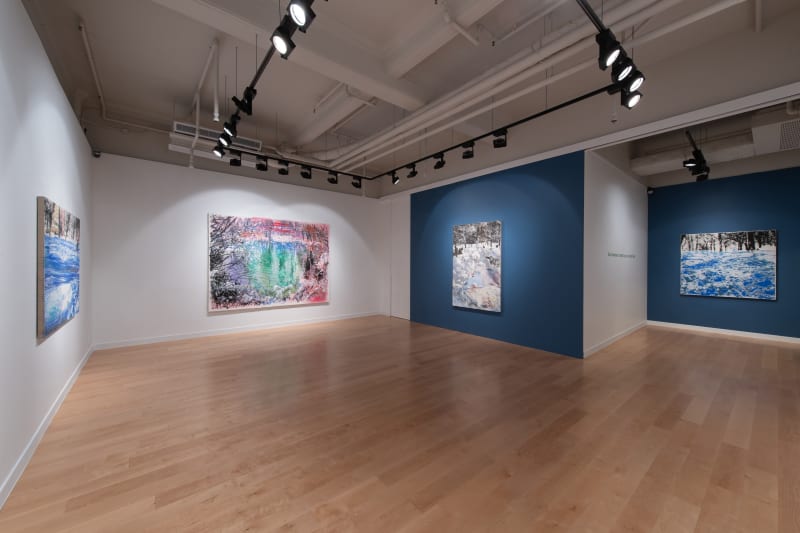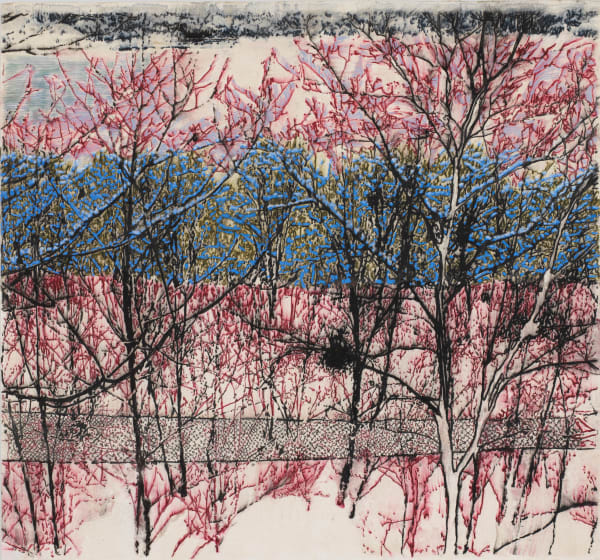ENA SWANSEA | mental map: Central Park
Ben Brown Fine Arts is thrilled to present the first solo exhibition of Ena Swansea in Hong Kong. Ena Swansea: mental map: Central Park brings together a group of recent paintings of urban landscapes, many depicting luminescent snow scenes, that verge on abstraction. This exhibition follows Swansea's highly successful show in 2018 at Ben Brown Fine Arts, London.
Swansea's paintings are based on the familiar, often overlooked, daily scenes of New York City. Swansea captures these fleeting moments with her camera, keeping a vast archive of subjects, investigated in depth over years. This trove of imagery is the source material for her paintings, in which she boundlessly explores topics in a serial manner, employing diverse painting techniques to evade a methodical approach to realism.
Swansea's paintings are characterised by their ambiguity. They are at once uncannily familiar yet lack a discernible narrative or identification, instead creating a sense of hazy recollection or an elusive dream. Swansea sees her work as flexible; the reading can alter depending on who is looking at it. The ephemerality of her work is further emphasized by the way in which she prepares her canvases and applies paint to their surfaces. In the current series, Swansea primed her canvases with a traditional white ground mixed with powdered marble and mica, achieving a luminescent surface on which to apply her pure colours, which seem to flicker and fragment as though illuminated from within, lending a cinematic, mutable quality to her paintings.
The exhibition consists of paintings of winter landscapes, which initially appear to be timeless bucolic scenes of snowfall, the urban grit of their location revealed only through slight details such as the trace of a fence or sullied snow. Hudson River, 2018, is dominated by the intricate patterning of skeletal black tree branches overlapping with bands of colour that vaguely suggest water and the warmth of life beneath the snowfall. snowman follows baby, 2018, is made up primarily of swirls of blues and incandescent whites, evoking not only snowfall but the sea or even Earth seen from afar. The image is punctuated by a small silhouetted figure running away from a snowman into a dark wood at the uppermost part of the canvas. These snow scenes are as disquieting as they are tranquil, familiar as they are obscure, explicit as they are oblique. Snow has a tranquilizing and transformative effect, even in the most chaotic of cities, creating a reversal of dark and light, with shadows suddenly becoming highlights, creating a veil over reality.










